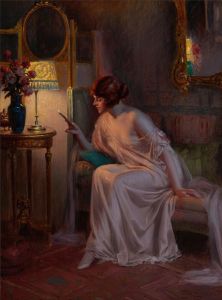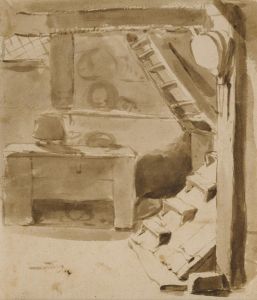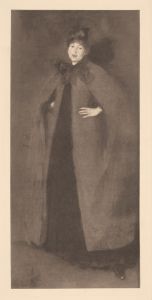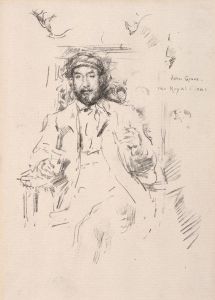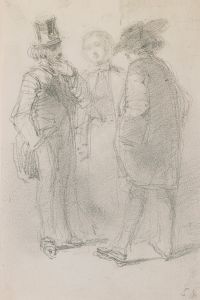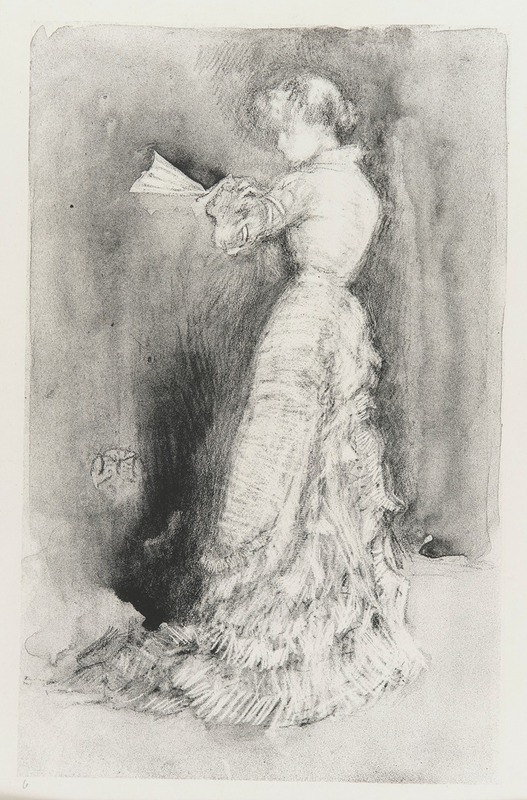
The Toilet
A hand-painted replica of James Abbott McNeill Whistler’s masterpiece The Toilet, meticulously crafted by professional artists to capture the true essence of the original. Each piece is created with museum-quality canvas and rare mineral pigments, carefully painted by experienced artists with delicate brushstrokes and rich, layered colors to perfectly recreate the texture of the original artwork. Unlike machine-printed reproductions, this hand-painted version brings the painting to life, infused with the artist’s emotions and skill in every stroke. Whether for personal collection or home decoration, it instantly elevates the artistic atmosphere of any space.
"The Toilet" is a painting by the American-born, British-based artist James Abbott McNeill Whistler. Whistler, who lived from 1834 to 1903, was a prominent figure in the art world and is best known for his contributions to the Aesthetic Movement, which emphasized the visual and sensual qualities of art and design over narrative or moral content.
"The Toilet," also known as "La Toilette," is one of Whistler's many works that explore themes of beauty, femininity, and the intimate moments of everyday life. The painting depicts a woman in a private, domestic setting, engaged in the act of dressing or grooming herself. This subject matter aligns with Whistler's interest in capturing the quiet, introspective moments of his subjects, often women, in their personal spaces.
Whistler's technique in "The Toilet" reflects his mastery of composition and his ability to create a harmonious balance of color and form. The painting is characterized by its delicate brushwork and subtle use of color, which create a sense of tranquility and refinement. Whistler often employed a limited palette, focusing on the interplay of light and shadow to convey mood and atmosphere. This approach is evident in "The Toilet," where the soft, muted tones contribute to the overall sense of calm and intimacy.
The influence of Japanese art, which Whistler greatly admired, can also be seen in "The Toilet." The simplicity of the composition, the attention to detail, and the emphasis on the beauty of everyday objects are all elements that reflect the impact of Japanese aesthetics on Whistler's work. This influence is part of what makes Whistler's paintings distinctive and innovative for his time.
Whistler's signature, a stylized butterfly, is often found on his works, including "The Toilet." This signature not only served as a mark of authenticity but also reflected Whistler's belief in the artist's role as a creator of beauty and harmony. The butterfly symbolized Whistler's delicate and refined approach to art, much like the qualities he sought to capture in his paintings.
"The Toilet" is part of Whistler's broader body of work that includes portraits, landscapes, and nocturnes. His most famous painting, "Arrangement in Grey and Black No. 1," commonly known as "Whistler's Mother," shares the same attention to composition and tonal harmony that is evident in "The Toilet." Whistler's contributions to art were significant, and his works continue to be celebrated for their beauty, elegance, and innovative approach to composition and color.
In summary, "The Toilet" by James Abbott McNeill Whistler is a fine example of the artist's ability to capture the quiet, intimate moments of everyday life with a refined and delicate touch. The painting reflects Whistler's mastery of composition, his subtle use of color, and his appreciation for the beauty of simplicity, all of which have cemented his place as a key figure in the history of art.





